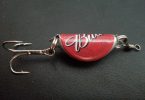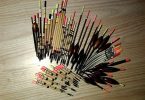Introduction
The productivity of most stillwater fisheries is governed, in the main, by the fertility of the bottom substrates. Typically, mud-bottomed lakes are quite productive, the consequence being that they can support larger numbers of fish than sand or gravel-bottomed fisheries.
However, where there are deep layers of silt or where the bottom comprises exposed clay, it is worthwhile improving the fertility of the bed. Silt rich in organic (= dead plant) material contains a useful potential supply of nutrients, but these ‘plant foods’ are usually locked up in the silt where oxygen cannot penetrate. This prevents bacteria from completing the rotting process, hence the presence of black, foul smelling mud. For somewhat different reasons, lakes lined with clay are potentially fertile if action is taken to liberate the nutrients contained in the closely bonded clay particles.
Lime Applications
The normal recommendation is to apply chalk or limestone compounds to the bed to help encourage bacteria that will break down the dead plant matter. As this takes place, there is usually a reduction in the depth of the silt and, thus, an increase in water depth.
Lime will also increase the pH of the water slightly – making it more alkaline (i.e. pH greater than 7) – and increase the level of dissolved calcium. Calcium is an essential ‘building block’ for many invertebrate animals, especially freshwater snails, and their numbers are likely to increase following liming, thereby providing fish with a greater ‘larder’ of food items.
Hydrated Lime
The material in most common use in encouraging the breakdown of organic matter in silty or clay-bottomed lakes is hydrated lime, formed by adding water to ‘quicklime’ (calcium oxide). Hydrated lime is relatively cheap and easy to apply, and it has an excellent track record.
Lime should be applied at the rate of about 250-3501b/acre during the winter/early spring months (December-early April). The task is a two-man operation best undertaken from a boat, one person scattering the lime directly onto the water’s surface from the boat’s bows while the oarsman rows over the newly spread material.
The treatment of a selected area is quite easy if the boat is rowed across the lake from one bank to another in ‘lanes’ a few yards apart, with lime being scattered into the water as the boat progresses. Distributed in this way, the turbulence caused by the boat ensures that the lime dissolves and disperses quickly. For reasons of practicality, it is preferable if the lime can be obtained in sacks and shaken onto the water from the part-opened bags.
If the liming is carried out on a trial basis initially and the effects are monitored, further lime introductions could be undertaken in subsequent years. In any event, it is most important that no more than about a quarter of the area of the lake is treated at any one time. The temporary fluctuation in the pH may be considerable, although this becomes stabilised within a few weeks.
It is recommended that a period of at least three or four weeks elapse between applications if a larger area were to be treated. Fish catches in the treated areas may be poor for a few weeks following lime applications, although this will be of little consequence if the work is carried out in the winter months, when few anglers may be fishing.
Siltex
Of similar effect is the proprietary product ‘Siltex’, sold by Aquatic Chalks Ltd. Siltex consists of small chalk particles that are of a honeycomb structure. In theory, this enables them to draw into the silt the air which the bacteria require to undergo the decomposition process; in practice, those fishery owners and tenants who have used both products believe they appear to be equal in their effectiveness.
Safety
Note that the use of so-called ‘builders’ lime’ or other formulations is inadvisable because of the impurities contained within them. The correct material is hydrated or slaked lime – also known as ‘garden lime’ – which is suitable for horticultural or agricultural use. The lime is not caustic unless all of the quicklime from which it is derived has not been hydrated properly.
Nevertheless, appropriate safety measures should be taken to prevent the inhalation of its dust (e.g. those applying it should wear old clothing, face masks and rubber gloves), and liming should not be carried out during windy weather.
Sources Of Materials
Hydrated lime – is available from agricultural merchants and limestone quarries. Details are listed in the ‘Yellow Pages’ telephone directory.
Siltex – is sold by Aquatic Chalks Ltd., Birch Cottage, Hungerton Hill, Hungerton, Grantham, Lincs. Tel: 01476 870647; Fax: 01476 879033.
———-
These general notes must be used for guidance only. They were prepared by:
Dr Bruno Broughton B.Sc. (Hons), Ph.D., F.I.F.M.
Trenchard, Lower Bromstead Road, Moreton, Newport, Shropshire TFIO 9DQ.
Tel: 01952 691515; Fax: 01952 691316. Email: bruno.broughton@virginnet.co.uk
[Latest update: 26 November 2000]







